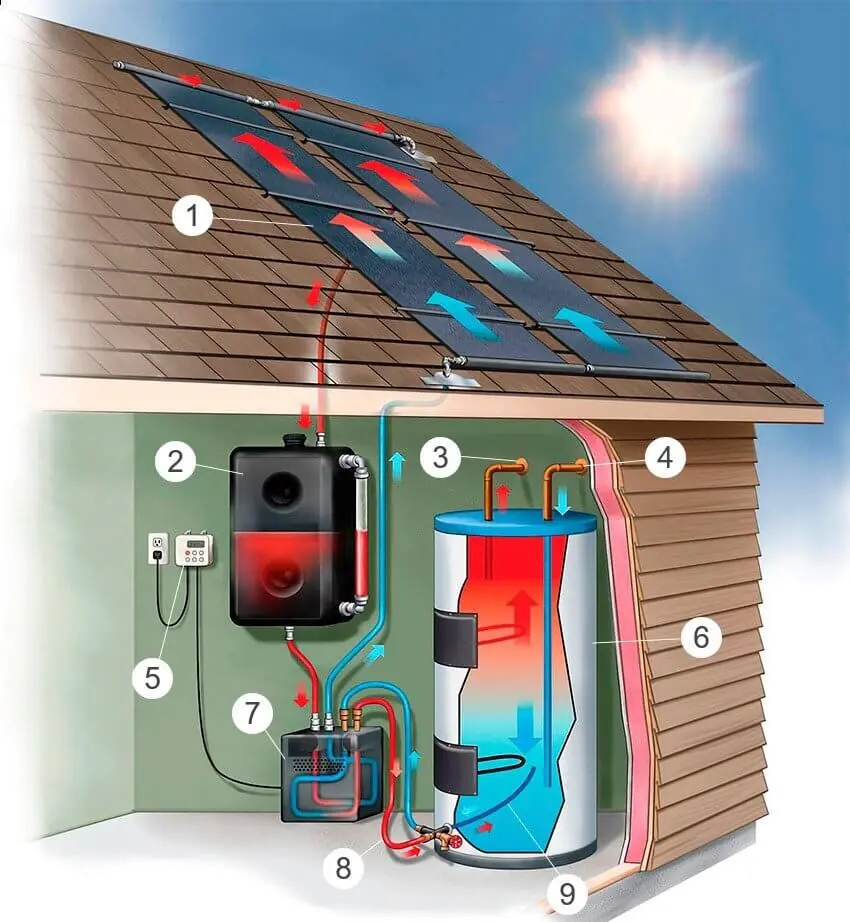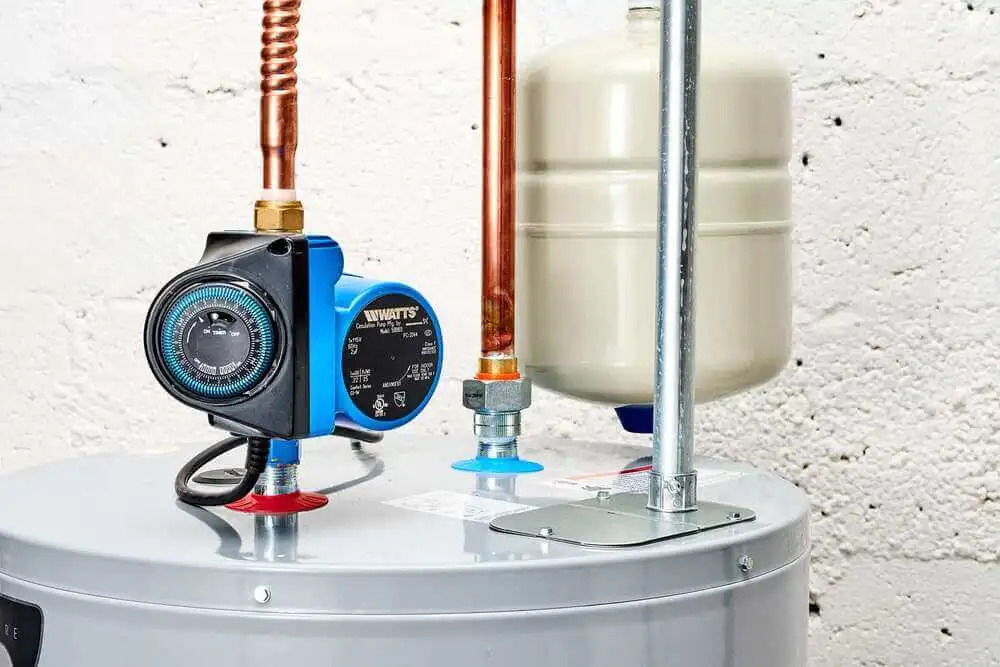Author: Rob Boyle is creator of Emission Index, a site dedicated to sharing data, trends and ideas on reducing greenhouse gas emissions.
Are you looking for additional solar water heating system informations?
Solar water heating systems harness solar energy to heat water, offering an environmentally friendly and cost-efficient alternative for residential and commercial hot water needs.
These systems are composed of solar thermal collectors, a storage tank, associated piping, and a fluid system to move the heat from the collector to the tank. By converting sunlight into thermal energy, these systems can reduce reliance on conventional energy sources, such as natural gas and electricity, and in turn, may decrease energy bills and carbon emissions.
In the United Kingdom, the climate is suitable for solar water heating despite the variable weather. The technology has advanced to where even on overcast days, solar collectors can absorb diffused sunlight to warm water effectively. Solar water heaters are versatile and can be integrated with existing heating systems, including boilers and heat pumps to provide hot water throughout the year.
Different configurations of solar water heating systems are available to suit various requirements and building designs. Active systems use pumps to circulate water or a heat-transfer fluid through the system, while passive systems rely on natural circulation.
Related: How Long Do Water Heater Last
The choice between a direct or indirect circulation system is often dictated by climate conditions and the quality of the water supply. Each setup has its advantages, and understanding the operational principles, components, and types of solar water heating systems is crucial for selecting the most appropriate system for a particular application.
Basic Solar Water Heating System Information

Solar water heating systems harness solar energy to heat water, with key components functioning synergistically. Their efficiency depends on the type of collectors and storage solutions employed. [source]
Components and Functions
- Solar Collectors: Capture and transform solar energy into heat.
- Heat Transfer Fluids: Circulate within the system, absorbing and transferring heat.
- Storage Tanks: Store heated water for later use.
- Controllers: Regulate system temperature and circulation.
- Pumps: Facilitate the movement of fluids throughout the system.
Types of Solar Collectors
- Flat-Plate Collectors: Sealed boxes with an absorber plate, typically suitable for residential use.
- Evacuated Tube Collectors: Consist of rows of parallel, transparent glass tubes, which are more efficient in colder climates.
Storage Solutions
- Pressurised Tanks: Designed to withstand high pressure, suitable for integrated collector storage systems.
- Thermosiphon Units: Use natural convection to move hot water into storage tanks, eliminating the need for pumps.
System Installation and Integration
Proper installation and integration are critical for the optimal functioning of a solar water heating system. Attention to detail during these stages ensures system efficiency and longevity.
Site Assessment
Before installation, one must evaluate the location to determine suitability. Key factors include:
- Solar irradiance levels specific to the site
- Roof strength and orientation relative to the sun
- Potential shading from surrounding buildings or trees
- Space availability for the system components
Installation Process
The installation of a solar water heating system involves several important steps:
- Mounting the solar collectors: The collectors should be securely attached to the roof with a focus on optimal tilt and orientation.
- Connecting pipework: This includes running insulated pipes from the collectors to the hot water cylinder.
- Fitting the thermal store: The cylinder or store must be situated and connected correctly to the solar loop and existing water supply.
- Installation of control systems: Controllers and sensors are installed to monitor temperatures and operate the system efficiently.
Integrating with Existing Systems
Integrating a solar water heating system with existing hot water systems requires:
- Compatibility assessment with current hot water systems (e.g., boilers, heaters).
- Incorporation of non-return valves and expansion vessels to manage flow and pressure.
- Ensuring the solar heating system is linked properly with the existing system to maximise energy savings.
Performance and Efficiency

In assessing solar water heating systems, it’s essential to understand their thermal performance and the strategies available to enhance their efficiency.
Thermal Performance Metrics
Solar water heating systems are evaluated using specific metrics such as the solar fraction, solar efficiency, and the coefficient of performance (COP). Solar fraction represents the portion of the total water heating load that is met by solar energy. Solar efficiency is a measure of the system’s ability to convert sunlight into heat energy for water heating. The coefficient of performance (COP) denotes the ratio of usable heat generated to the amount of energy consumed.
- Solar Fraction (SF): Measures the percentage of total heating provided by solar energy. It is calculated using the formula SF = (Solar Heating Contribution / Total Heating Requirement) × 100%.
- Solar Efficiency (η): Given by the ratio of useful heat energy gained to the solar energy incident on the collector. It can be expressed as η = (Useful Heat Energy / Incident Solar Energy) × 100%.
- Coefficient of Performance (COP): Calculated as COP = (Useful Heat Energy / Energy Consumed).
Efficiency Improvement Strategies
Several strategies can be implemented to increase the efficiency of solar water heating systems. Insulation of the storage tank and piping, use of selective coatings on the solar collector surface, and proper system sizing are critical for improving performance.
- Insulation: Ensuring optimal insulation of the storage tank and pipework to reduce heat loss.
- Selective Coatings: Application of special coatings on the collector surface to maximise absorption and minimise emission.
- System Sizing: Tailoring the size of the solar collector and storage volume to the specific hot water demand.
Selecting appropriate equipment and regular maintenance are also important to sustain high efficiency levels. Proper orientation and tilt of the collectors, in conjunction with a well-designed control system, help in maximising the capture of solar radiation.
Maintenance and Cost Considerations
Maintaining a solar water heating system is critical for optimal performance and cost-efficiency. Proper care can extend the system’s lifespan, while understanding costs and incentives can guide investment decisions.
Routine Maintenance
Solar water heating systems require periodic checks to ensure they operate efficiently. Maintenance tasks typically include:
- Inspection of the solar collector for cleanliness and integrity.
- Checking the system’s antifreeze level if it’s a closed-loop system.
- Verifying pipe insulation to prevent heat loss.
- Assessing the pump and controller for proper operation.
- Reviewing the pressure relief valve to ensure it is unobstructed.
An annual inspection by a qualified technician is recommended, which can cost around $100. They will also check for leaks or corrosion and can help prevent costly repairs down the line.
Cost Analysis and Incentives
The cost of a solar water heater system in the US can vary widely depending on several factors, including the system size, type, geographic location, and available incentives. On average, a solar water heater costs between $3,000 to $9,000 installed, which can be mitigated by tax credits and rebates.
Homeowners should contact local authorities or energy suppliers to explore available incentives specific to their region.

Michael Davis is a heating & plumbing expert who currently works as independent contractor in SC. He also writes for Plumbertip.
For almost 10 years he worked on various plumbing tasks across South Carolina.



